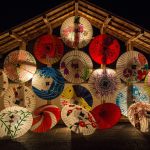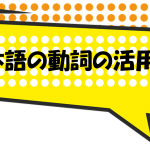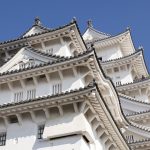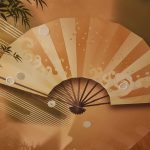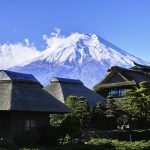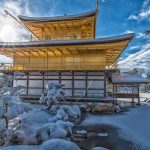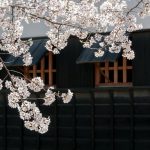
目次
What are Japanese participles?
Let’s learn particle de/で for now.
How to use particle de/で
The particle de/で is used to indicate where, how/with what, how long, or why.
In English, prepositions are always followed by a noun group and make a prepositional phrase. A prepositional phrase plays the grammatical role of an adjective or adverb.
Similarly, de/で always follow a noun group and make a postpositional phrase, which plays the grammatical role of an adverb. That is, postpositional phrases usually tell us more about verbs.
<Example 1>
Toshokan de benkyoo-suru.
としょかん で べんきょうする。
図書館 で 勉強する。
[library de/で study]
I'll study at the library.
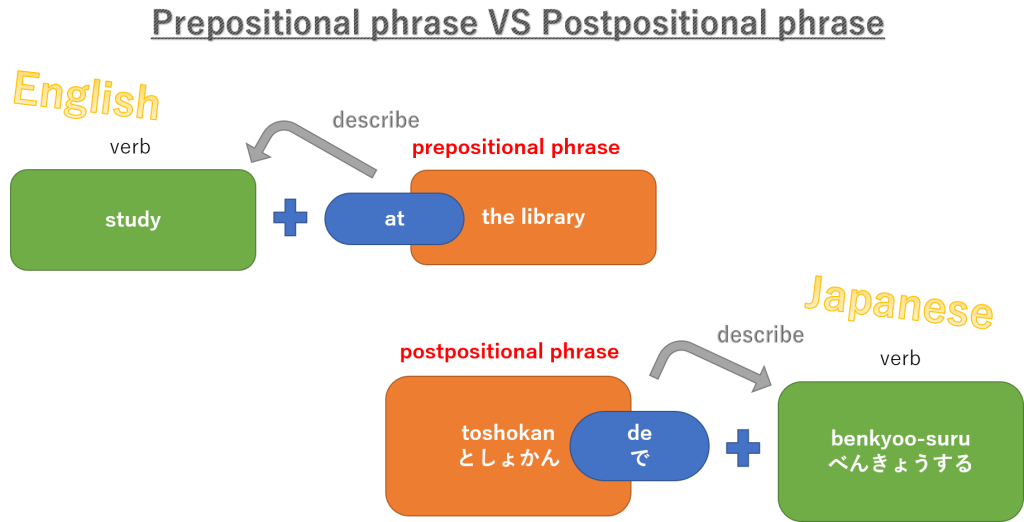
de/で indicating location: location + de/で
de/で is used with location and it is usually translated as "at."
<Example 2>
Daigaku de nihongo o benkyoo-shita.
だいがく で にほんご を べんきょうした。
大学 で 日本語 を 勉強した。
[university de/で Japanese-language o/を study-did]
I studied Japanese at the university.
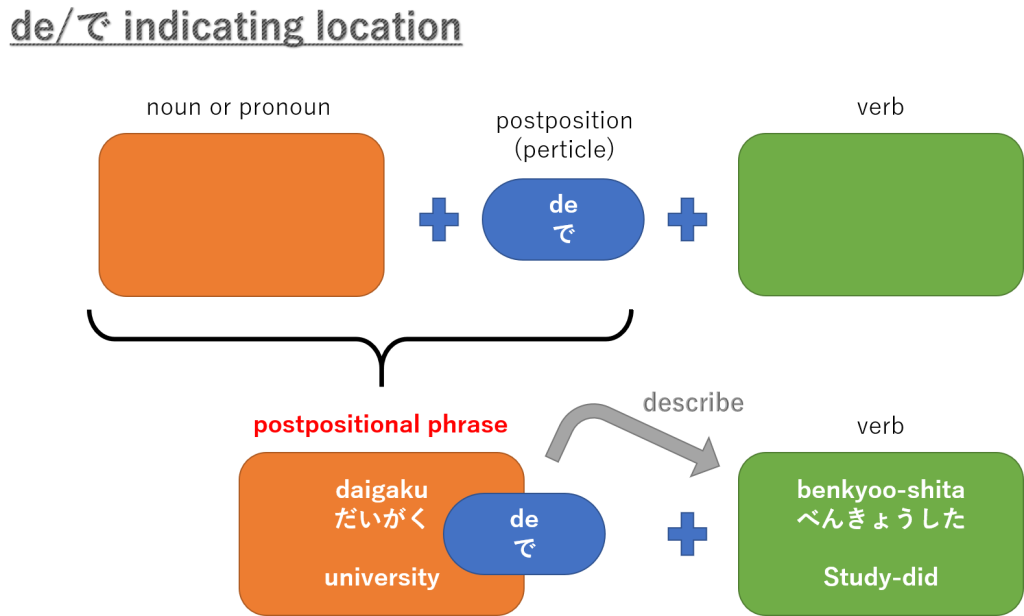
“Daigaku” is followed by the particle de/で. This tells us that the university is the location where I studied Japanese.
<Example 3>
Kafe de koohii o nonda.
かふぇ で こーひー を のんだ。
カフェ で コーヒー を 飲んだ。
[cafe de/で coffee o/を drank]
I drank coffee at the cafe.
Here, de/で comes after “kafe”, and this tell us that cafe is the location where I drank coffee.
de/で indicating means: means + de/で
de/で is used to indicate by what means you do something or what something is done with.
<Example 4>
Kuruma de ki-mashita.
くるま で きました。
車 で 来ました。
[car de/で came]
I came by car.
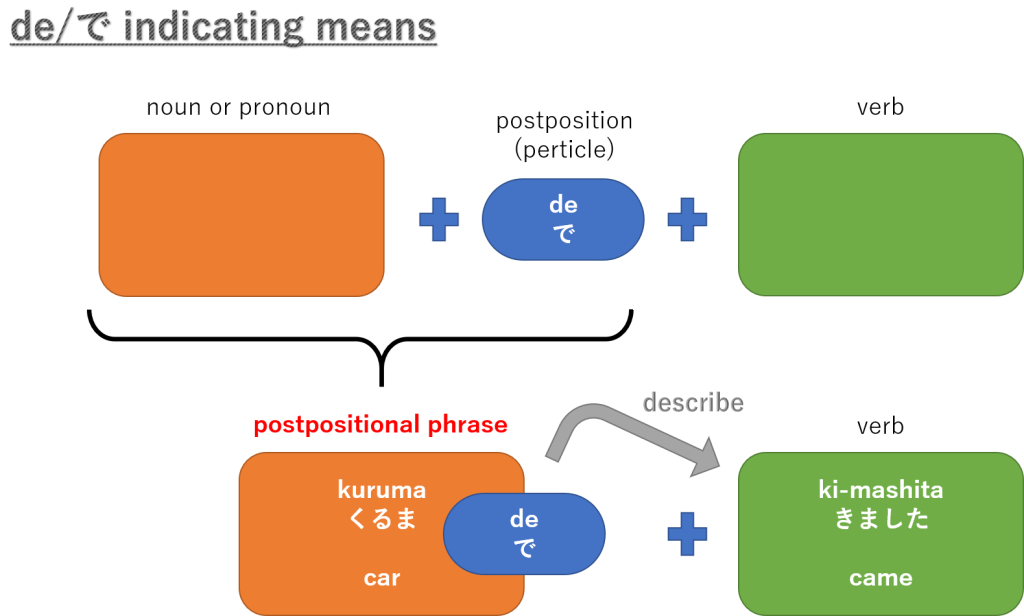
“Kuruma” is followed by the particle de/で. This tells us that I used the car as a means of the act of comming.
<Example 5>
Enpitsu de kaki-mashita.
えんぴつ で かきました。
鉛筆 で 書きました。
[pencil de/で wrote]
I wrote with a pencil.
The writing is done with a pencil, and we know this because "enpitsu" is followed by de/で.
de/で indicating time: time + de/で
de/で is used with time to show how long something took to complete.
<Example 6>
Go-fun de owari-mashita.
ごふん で おわりました。
五分 で 終わりました。
[five-minutes de/で finished]
It was finished in five minutes.
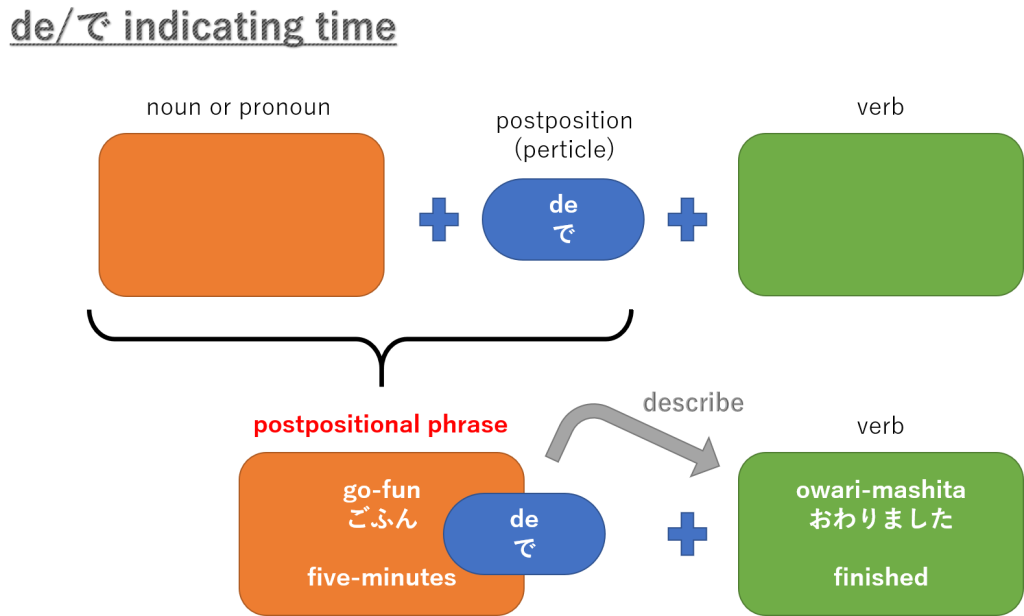
It took five minutes to finish it because "go-fun" is followed by de/で.
<Example 7>
San-fun de soko ni/に tsuki-masu.
さんふん で そこ に つきます。
三分 で そこ に 着きます。
[three-minutes de/で there ni/に arrive]
I'll be there in three minutes.
Here, de/で comes after “san-fun”, and this tell us that three minutes is needed for me to be there.
de/で indicating reason: reason + de/で
de/で indicates reason and it is translated as "because of."
<Example 8>
Jyuutai de okure-mashita.
じゅうたい で おくれました。
渋滞 で 遅れました。
[traffic jam de/で late-was]
I was late because of the traffic jam.
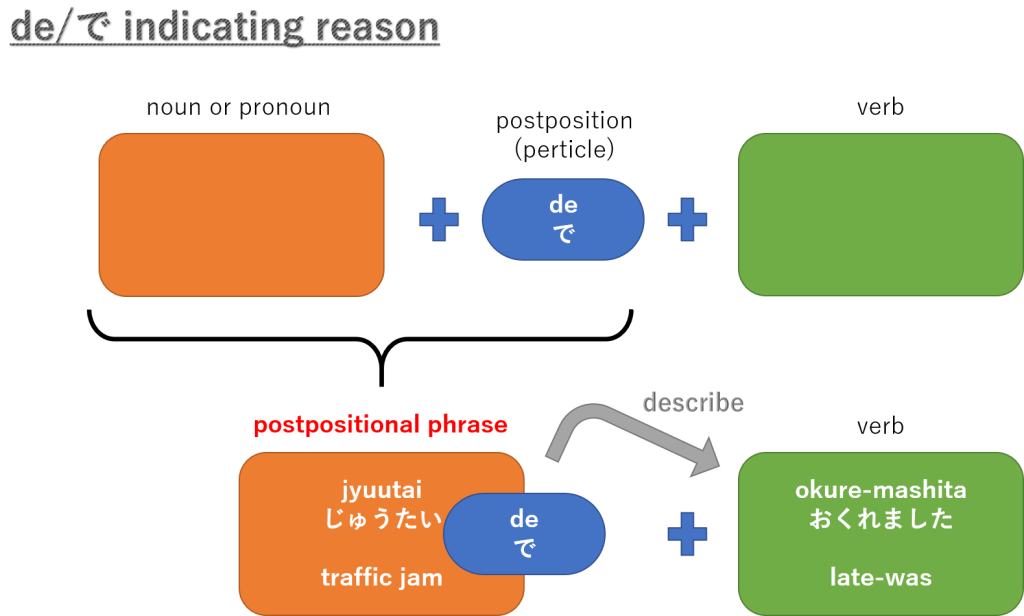
The traffic jam is the reason why I was late, and we know this because “jyuutai” is followed by de/で.
<Example 9>
Shiai ga ame de tyuushi ni natta.
しあい が あめ で ちゅうし に なった。
試合 が 雨 で 中止 に なった。
[match ga/が rain de/で cancel ni/に became]
The game was cancelled because of the rain.
Here, de/で comes after “ame”, and this tell us that the rain is the reason why the game was cancelled.
You may also like
https://jpgrammar.com/particle-ni/


